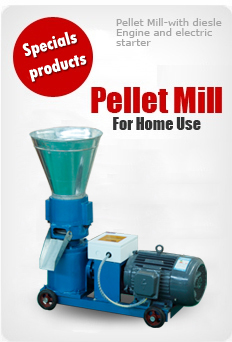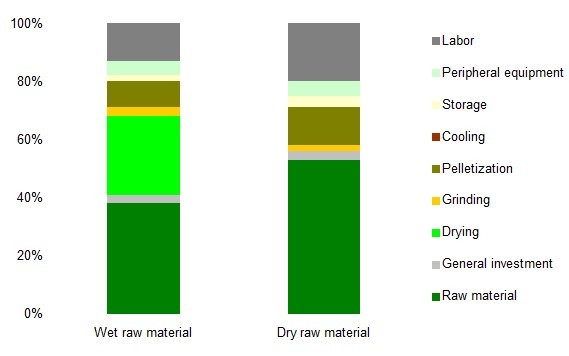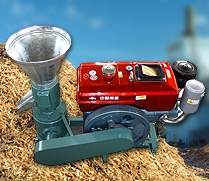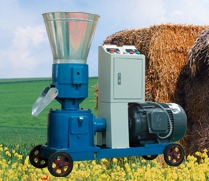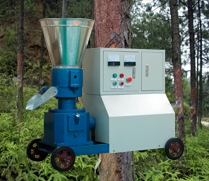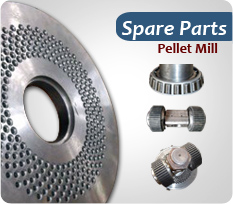
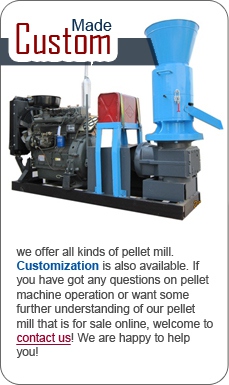

|
Pellet Production-DringDryers are one of the most expensive and energy intensive pieces of equipment in the pellet line. Rotary drum dryers have relatively low cost and simple operation procedures. They have a tumbler which continually exposes the green material to hot air. Suspension dryers are less economical but have a smaller footprint in the work area, so are worthwhile for smaller facilities.
Table 6: Variable pellet production costs with wet and dry raw materials Dryer energy consumption is minimized by using an efficient thermal energy source, such as a wood product, to dry the green material. In other words, the dryer need not be connected to the local electric grid to draw energy; existing biomass feedstock may be burned to produce the required heat. Using wood creates economies of scope associated with an integrated biomass system. Dust collected after the pelletization process and during the bagging process can be recycled in the drying system. In an integrated biomass campus, waste products from other processes such as dried wood chips, sawdust, shavings, wood flour, wood waste could be used as dryer feedstock. Many manufacturers are capable of supplying a dryer capable of firing with a variety of biomass sources, especially woody biomass. The moisture content of agricultural biomass, in contrast, is typically low. Straw delivered to the pellet production plant generally consists of air-dried bales, with a moisture content of between 15 and 20 percent. Compare this with wet sawdust which may register a moisture content of 50 to 60 percent. As the moisture content of straw and wood pellets after pelletization is 7 to 12 percent, if straw material is used in the pellet production there is limited need for drying. Some agricultural biomass feedstock will require a more elaborate drying process, for example reed canary grass. With small-scale production, costs are likely to dictate either batch perforated-floor technology using heated air, or a simple band conveyor using exhaust gas or heated air. It is only at mid-scale production and above that a rotary dryer will come into play. True large-scale pellet plants will incorporate the use of steam dryers. This makes the recovery of low pressure steam or hot water for district heating possible. The closed system assures zero gaseous emissions. In stand-alone applications a low investment is usually emphasized. Correspondingly less energy efficient solutions like flue gas dryers (drum dryers) or band dryers may be preferred. Temperatures in the dryer vary depending on the required drying duration. In drum dryers and other such “slow” dryers, the temperature of the raw material should not exceed 200 degree Celsius. This is to eliminate the risks of the material losses due to early stages of pyrolysis. For the same reason, small and homogeneously-sized particles are favorable for an optimal drying process. Large particles imply a risk for pyrolysis on the surface when the inner parts of the particle are insufficiently dried. Rotary dryers may accept large and variable particle size fuels, but flash and belt dryers usually require crushing of the fuel to a particle size below 10 millimeters. The material will have a bulk density in the range 50-400 kilograms per cubic meter, depending on the type and moisture content. Usually the bulk material will have only moderate flow properties, but will readily permit through-circulation of the drying medium. Traditional dryers are divided into direct and indirect dryers according to the way of heat transfer. In direct dryers the matter which transfers the moisture away is usually hot gas. The gas is in direct contact with the substance to be dried. These kinds of dryers are, for example rotary drum, flash and fluidized bed dryers. The drying surface is heated with electricity, oil or steam circulating in the tubes of the drying unit, but does not come in direct contact with the dried material. Large-scale operations may also engage in other sophisticated drying methods, often by combining drying with other phases of the pelletization process. E-mail: info@pelletmillshop.com Our office staff is available to answer your questions, Monday through Friday, from 8:00 to 4pm (CST) American Biomass Pellet Mill for Sale (Wood/Sawdust/Straw......)Pellet Machine (with Diesel Engine)Here is diesel powered pellet machine extruder for sale! Pellet machine with diesel engine is a great alternative, especially for the area where three-phase electric power is not possible or quite expensive.With diesel engine, you can make... Pellet Machine(with Electric Engine)This series pellet making machines are powered by electric engine. With an electric engine you can precisely adjust the speed of the pellet machine die or roller by the transmission gear-boxes which is connected to the motor. By this way, you can con... Pellet Machine (Motor Has Been Covered)This series pellet fuel machines are powered by electric motor connected to a CE certificated electric cabinet. With the electric cabinet, the process of pellet maker became more intelligent and safe. If there is an emergency when you producing coal ... |
Copyright © 2011 Pellet Mill Shop. Powered by Altocraft USA.Inc

 PMF9E15 Biomass Wood Pellet Machine
PMF9E15 Biomass Wood Pellet Machine PMF9EC15 Biomass Wood Pellet Machine
PMF9EC15 Biomass Wood Pellet Machine PMF6E6 Biomass Wood Pellet Machine
PMF6E6 Biomass Wood Pellet Machine PMF8E10 Biomass Wood Pellet Machine
PMF8E10 Biomass Wood Pellet Machine PMF10E20 Biomass Wood Pellet Machine
PMF10E20 Biomass Wood Pellet Machine